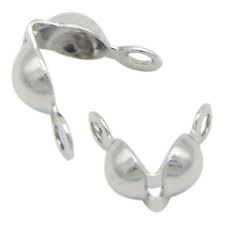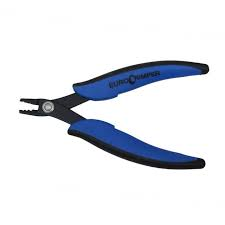If you're new to jewelry-making, you will come across a myriad of terms that you've likely never heard before that might leave you feeling overwhelmed. Like any skill, there's a specific list of jewelry-making jargon that you'll become familiar with over time. To get you started, the Solid Oak Inc. team has compiled a few of the most basic terms along with easy-to-understand definitions. Learn these terms and you'll sound like a pro in no time!
Beading Wire: Beading wire is also known as Tiger Tail. Beading wire is made specifically for crafting beaded jewelry. It consists of a number of very fine strands of steel wire twisted together and covered with a very thin plastic coating. The plastic film prevents unraveling and tarnishing of the beading wire. This is a very sturdy wire option that is great for large necklaces or any piece of jewelry that you intend to wear frequently. It is too stiff to hold a knot, so other parts, called findings, are used in finishing and connecting jewelry made with beading wire.
Calotte: A Calotte is a common jewelry finding sometimes referred to as a bead tip, because it allows you to finish the ends of bead strands very cleanly and professionally. The cup encloses a crimp bead or a knot and makes the finished look neater while providing extra strength to your piece. A jump ring is threaded through the end loops of the calotte, which can then be attached to a clasp.

Crimp Bead: Crimp beads are crucial for professional-looking jewelry-making. They are very small beads made from a soft metal that is easy to squeeze together. Crimp beads are used to secure wire ends and to "float" beads on wire, thread, cord, and some chains. The crimp bead slips on easily and is then squeezed with crimping pliers to secure them in place. They replace knots when making jewelry with beading wire.
Crimp Cover: Once you have your crimp bead on and secured, it's time to reach for your crimp cover. While crimp beads are very small, they can still affect the look of your finished product. Crimp covers are hollow, rounded metal parts that are designed to fold around the crimp bead. Once in place, crimp covers look like normal metal beads that blend in well with the finished design.
Crimping Pliers: Crimping pliers are the tool you use to squeeze crimp beads to secure them. They are specially designed to securely crimp the beads into flatted plates around the wire. Crimping pliers look similar to other pliers but have grooves in the mouth to make it easier to hold the crimp bead during the process. It's a two-step process: one part of the crimping tool jaw is used to squish the crimp bead in place. Then, the other part of the tool's jaw is used to basically fold the flattened crimp bead around the beading wire, making a very compact - and very secure - stopper.

Earring Hook: An earring hook is exactly what you would imagine. If you've ever worn or seen a pair of dangly earrings, then you've seen an earring hook. This is the metal component that passes through the ear to make an earring. They have a small loop on the end that is used to attach your beaded creation.
Eye Pin: An eye pin is a length of wire with a loop at one end that is used to connect two or more beads or other components of your jewelry. Eye pins are commonly used for making earrings, but have many other uses in the realm of jewelry making.
Head Pin: A head pin is very similar to an eye pin but a flat metal head replaces the loop. These pins are used to attach beads to a jewelry piece such as in earrings, hanging pendants, and other dangling pieces on necklaces and bracelets.

Jump Ring: A jump ring is a circle of wire that is used to attach beads, charms, and clasps to the jewelry piece. The jump ring has a flush break in the wire, so the ring mat be twisted open, other pieces linked on, and then neatly twisted back in the closed position.
Lobster Claw Clasp: A lobster claw clasp is a very commonly used closure in jewelry making. The clasp has a small loop on one end for attaching the jewelry, and a larger closure on the other end that can be opened and hooked around loops or chains to secure the jewelry onto a person's wrist or around their neck.
Stretch Cord: Stretch cord is often used to create simple beaded bracelets. It is moderately strong, and because of the stretch it is perfect for slip-on bracelet creations that need no findings or other closures. Stretch cord is often clear, although colors are certainly available, and it comes in a variety of thicknesses and stretch abilities.

There you have it, jewelry makers! While this list is far from comprehensive, it will certainly get you started. You can create innumerable jewelry designs using the components we've discussed in this article. There are many blogs online that go into more complex jewelry-making jargon when you're ready to move to the next level. Solid Oak Inc. has a variety of pendants, charms, and jewelry-making kits to get you started. All of our products are beginner-friendly, and our kits come with clear, easy-to-follow instructions. Practice makes perfect so don't get discouraged if you struggle through your first few pieces. Stick to it and you'll be a pro in no time! Happy crafting!

